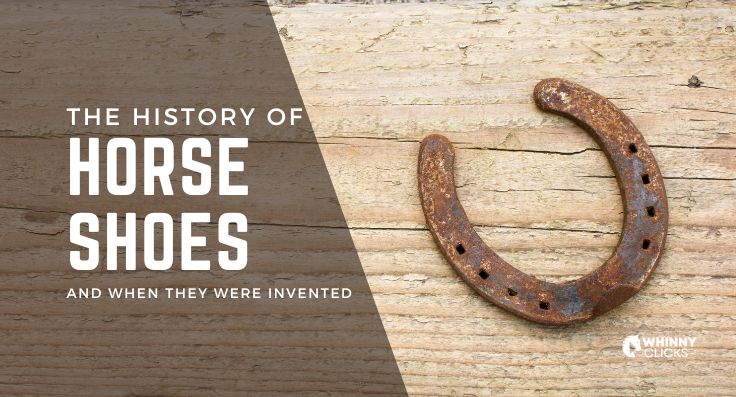The History of Horseshoes and When They Were Invented
Horseshoes have long been a symbol of good luck, a staple of folklore, and an essential element of horse care. This seemingly simple piece of metal has a history as complex and intriguing as that of the creatures they serve. The horseshoe has evolved throughout history, with changes spurred by developments in technology, warfare, and the environment.
The Early Days: A History Obscured by Time
The precise origins of the horseshoe are shrouded in the mists of antiquity, much like the early history of the horse itself. However, it’s widely accepted that the practice of protecting horses’ hooves began thousands of years ago with cultures that heavily relied on these magnificent animals for warfare, transport, and agricultural purposes.
One of the earliest known forms of hoof protection comes from the Roman Empire. The Romans, realizing the need to protect their horses’ hooves from wear and tear during long journeys on varying terrains, employed a type of hoof protection called the “hipposandal”. This was a wrap-around, removable iron shoe that offered protection and durability. The hipposandal was less like a modern horseshoe and more like a boot, tied or strapped onto the hoof.
However, it’s worth noting that the practice was not widespread, as not all terrains or use cases required hoof protection. Many horses managed just fine with their bare hooves, especially those in more forgiving environments.
Middle Ages: The Emergence of the Modern Horseshoe
The modern horseshoe as we know it, a U-shaped piece of metal nailed directly onto the horse’s hooves, started to emerge around 500 AD. At this point in history, horses were becoming increasingly important in agriculture, trade, and warfare across Europe.
The rapid spread of the nailed horseshoe across Europe is often attributed to the movement and influence of the Celtic people. They are believed to have developed a technique to nail bronze shoes to horses’ hooves, improving the durability and lifespan of the shoes.
The use of nailed horseshoes gradually increased throughout the Middle Ages as a result of two significant factors. First, as horses became more crucial in warfare and transportation, the need to keep them healthy and mobile was vital. Second, changes in climate during the period known as the “Little Ice Age” led to wetter, muddier conditions in many parts of Europe. This made hoof protection even more critical, as the conditions could lead to hoof rot and other ailments.
The Iron Age: Advances in Metallurgy and the Perfect Horseshoe
As metallurgical techniques advanced during the Iron Age, iron became the preferred material for horseshoes due to its strength, durability, and availability. Blacksmiths began to customize horseshoes to individual horses, taking into account factors like the horse’s work, gait, and the shape and condition of its hooves.
During the 11th and 12th centuries, the Crusades were a significant catalyst for the widespread use of horseshoes. The journeys were long and harsh, necessitating robust hoof protection for the war horses. Many knights returned with stories about the advantages of horseshoes, further popularizing the practice in Europe.
The Industrial Revolution: Mass Production and Standardization
The Industrial Revolution in the 18th and 19th centuries saw significant changes in the manufacturing of horseshoes. The introduction of machinery led to mass production, making horseshoes more accessible and affordable. This led to a rise in the use of horseshoes among common folk, beyond just the military and wealthy elites.
During this period, standard sizes and shapes of horseshoes were established, allowing for broader distribution and easier fitting. The invention of the “pritchel”—a type of punch for creating nail holes—around the 19th century made the process of nailing horseshoes more manageable, cementing the use of nailed horseshoes.
Modern Day: From Necessity to Symbolism
The advent of motor vehicles in the 20th century dramatically decreased the reliance on horses for transportation and work, subsequently reducing the need for horseshoes. However, they remain a critical aspect of horse care in certain contexts, such as competitive equestrian sports, police horse units, and in areas where horses are still used for work.
Today, horseshoes are more than just a practical tool. They are ingrained in our culture and folklore, often associated with luck and protection. They are also a symbol of the craft of blacksmithing, a profession which, despite being less prevalent today, still holds an air of fascination for its link to our history and traditions.
Conclusion
The history of the horseshoe is a testament to human ingenuity and the evolution of technology. From the Roman hipposandal to the standardized iron horseshoes of the Industrial Revolution, each stage of development reflects the needs and challenges of the time. Today, although their use may be less widespread, horseshoes hold an enduring place in our history, culture, and mythology, bridging the gap between past and present.


